
The Doomed Mission Behind Sam Altman's Shock Ouster From OpenAI
Healthy companies led by competent, commercially successful and globally beloved founders generally don’t tend to fire them. And,
2023-11-20 08:15
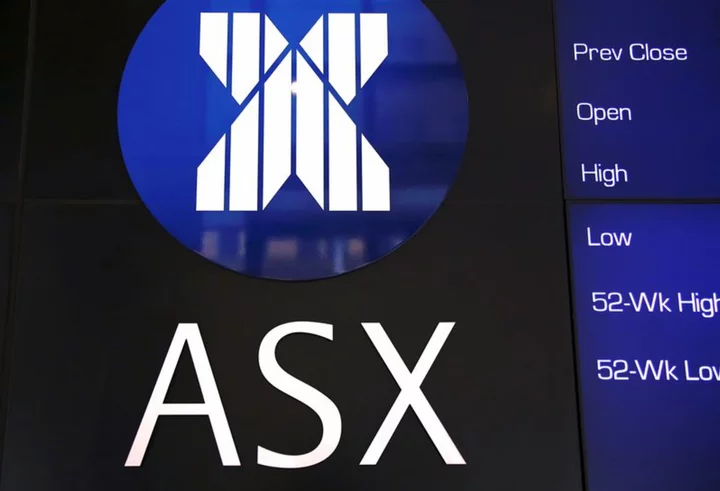
Australian bourse operator partners with TCS for trading software replacement
Australian bourse operator ASX Ltd said on Monday it would proceed with a product-based solution delivered by TATA
2023-11-20 06:17
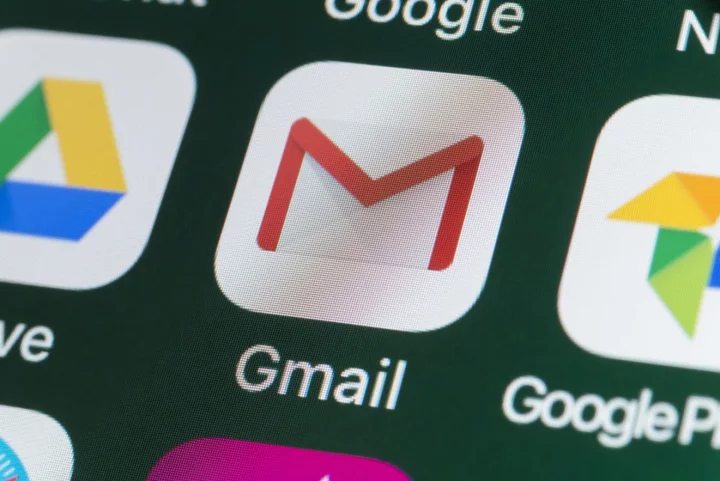
Gmail users receive urgent warning before account purge
Google’s decision to delete millions of inactive Gmail accounts could erase millions of photos and other irretrievable memories, users have warned. The purge, which comes into effect next month and will hit any account that has not been used for more than two years, could impact parents who have set up email addresses for young children in order to share and mark milestones with them. It could also inadvertently affect people who continue to manage the online accounts of deceased relatives. Googleannounced the policy in a blog post earlier this year, claiming that the move aims to protect active users from security threats like phishing scams and account hijacking. The mass closure will also free up significant amounts of server space, which will also save the US tech giant money and resources. Google warned that the new policy applied to personal Google accounts, which includes content within Google Photos and Google Workspace tools like Docs, Drive, Gmail, Meet and Calendar. Nicholas Worley, founder and chief executive of digital archiving platform Inalife, urged people to take action immediately in order to risk losing access to the accounts. “If you have a Google account set up for your kids and have been emailing them, or if you manage the account of a deceased loved one... Login, save or backup any important memories and stories,” he wrote on LinkedIn. Mr Worley told The Independent that he began recording memories when he learnt he was having his first child in 2019. “I have friends and now Inalife users who had set up emails for their kids and hadn’t known about the deletion issue before being told,” he said. The Independent has reached out to Google for further information about whether any impacted accounts will be retrievable once the purge has taken place, and the exact number of accounts potentially impacted. In its May blog post, Google’s vice president of product management Ruth Kricheli said that users would be able to keep their account active by reading or sending an email, using Google Drive, watching a YouTube video while logged in, downloading an app on the Google Play Store, or using Google Search. “[The] update helps us continue our advancements in account security, and helps reinforce our commitment to keep your private information private,” she wrote. “This update aligns our policy with industry standards around retention and account deletion and also limits the amount of time Google retains your unused personal information.” Google has already begun sending notifications to both the main email addresses and recovery emails of any accounts at risk of deletion. Read More Google is about to ditch passwords forever Don’t believe your eyes: how tech is changing photography forever Google issues three-week warning to Gmail account holders WhatsApp warning over fee to keep old messages
2023-11-20 02:49
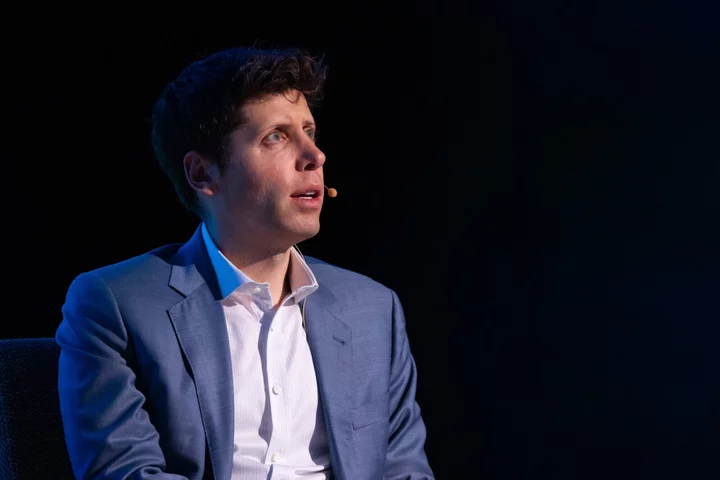
Altman Sought Billions For AI Chip Venture Before OpenAI Ouster
In the weeks leading up to his shocking ouster from OpenAI, Sam Altman was actively working to raise
2023-11-20 01:59
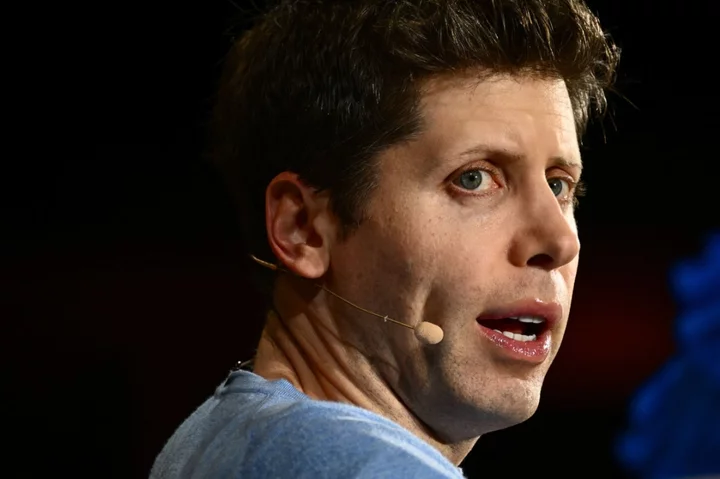
OpenAI in talks to bring Sam Altman back days after CEO ouster, reports say
Just days after Sam Altman was fired as OpenAI’s CEO, the board might be considering bringing him back, according to reports. Anonymous sources told both the Wall Street Journal and New York Times that the board is considering walking back on its dramatic firing of Mr Altman. Both outlets reported that Microsoft, a prominent investor in the company, was leading the charge to reinstate Mr Altman. The company announced the leadership change on Friday. “Mr. Altman’s departure follows a deliberative review process by the board, which concluded that he was not consistently candid in his communications with the board, hindering its ability to exercise its responsibilities,” the company wrote. “The board no longer has confidence in his ability to continue leading OpenAI.” While publicly citing communication issues, behind closed doors, the board and Mr Altman appeared to diverge when it came to OpenAI’s future. Mr Altman was hoping to push development more aggressively than the board, CNN reported. Greg Brockman, the president and cofounder of OpenAI who was asked to leave the board, wrote on X that the operation to upend the leadership happened quickly. Mr Altman was asked to join a video call with the board at noon on Friday and was immediately fired. Mr Brockman was not a part of the video meeting, he said. Twenty minutes later, Mr Brockman was told that he could stay in his role, but was being removed from the board, he wrote. “We too are still trying to figure out exactly what happened,” Mr Brockman wrote. He later announced he was quitting “based on today’s news.” Following his exit, Mr Altman wrote on X: “i loved my time at openai. it was transformative for me personally, and hopefully the world a little bit. most of all i loved working with such talented people. will have more to say about what’s next later.” The Times also reported that Mr Altman and Mr Brockman have plans to launch a new startup in the wake of his ouster and are speaking to investors. Those plans have not been made public. Read More OpenAI co-founder Sam Altman ousted as CEO ChatGPT Plus stops signups after major update ChatGPT creator mocks Elon Musk in brutal tweet
2023-11-20 01:29

Dinosaurs still exist on other planets, say scientists
The dinosaurs may have been extinct for more than 65 million years but scientists have suggested that they could still exist as aliens on other planets. Researched published in the Monthly Notices of the Royal Astronomical Society suggests that dinosaurs might not only be on other planets but that we could also find them. The study suggests that if scientists researched compounds that are not currently on Earth but ones that were around during the age of the dinosaurs then it may yield some results. One key element that scientists believe could unlock what would be a groundbreaking discovery is oxygen. The levels of oxygen on Earth at the moment are around 21 per cent but during the time of dinosaurs it was higher at 30 per cent. This, in theory, allowed the dinosaurs to flourish and rule the planet for millions of years. The study suggests that if similar levels of oxygen can be discovered on faraway planets then the conditions could be right for alien like dinosaurs to exist. The study's co-author Lisa Kaltenegger said in a statement: "Modern Earth's light fingerprint has been our template for identifying potentially habitable planets, but there was a time when this fingerprint was even more pronounced — better at showing signs of life." She adds: "This gives us hope that it might be just a little bit easier to find signs of life — even large, complex life — elsewhere in the cosmos." One clue that could unlock this discovery which scientists are looking for are signs of a Phanerozoic stage on a planet which would allow creatures like dinosaurs to evolve. The study's lead author, Rebecca Payne of Cornell University, said: "The Phanerozoic is just the most recent 12 per cent or so of Earth's history, but it encompasses nearly all of the time in which life was more complex than microbes and sponges. These light fingerprints are what you'd search for elsewhere if you were looking for something more advanced than a single-celled organism." If they are successful in finding these conditions on other planets then Kaltenegger believes it could lead to the discovery of dinosaurs that have never been found on Earth. "Hopefully we'll find some planets that happen to have more oxygen than Earth right now because that will make the search for life just a little bit easier," she said. "And, who knows, maybe there are other dinosaurs waiting to be found." Sign up for our free Indy100 weekly newsletter Have your say in our news democracy. Click the upvote icon at the top of the page to help raise this article through the indy100 rankings.
2023-11-20 00:28

How Apple put Snoopy into its new Watch faces
When the Apple Watch first launched back in 2015, there were 10 Watch faces. Now, there are more than 50. The newest among these is the Snoopy Watch face, designed in conjunction with the Charles Schulz Studio. The Independent sat down to talk to Gary Butcher, human interface designer at Apple, Eric Charles from Apple Watch product marketing and Paige Braddock, chief creative officer at Charles M Schulz Creative Associates to discover everything about the new Watch face. This is not the first time Snoopy has been on watches and he’s even appeared on high-end models like the Omega Speedmaster. As Eric Charles explains, “There’s a deep horological legacy of Snoopy appearing on watch faces from his early as the 1950s, and on Apple Watch, we’ve been able to bring Snoopy to life in whole new ways.” There 148 different animations for the Watch, which would run for 12 minutes if you played them one after the other; it’s tempting to try. They were all developed from an intense brainstorming session. Braddock, who was hired back in 1999 by Charles Schulz himself to work as an illustrator at the studio, reveals the creative dynamic: “Both Apple and peanuts have strong identities and a strong desire to connect in an authentic way with fans. “At the Schulz studio, we wanted to be authentic to Snoopy’s DNA and simultaneously explore the Apple Watch technology. Everyone knows that Peanuts is a comic strip that exists in a different decade: there are no smart phones or iPads in the comic strip. “But with mutual respect, it is possible to coexist as a modern tech company and a comic strip with a rich historic legacy. I always feel like a true collaboration is not one thing eclipsing the other, it’s finding a balance and working with contributors’ strengths.” As Braddock points out, there’s something about Snoopy for the Watch that’s a great fit. “If you look at a comic strip like this, it’s basically a four-panel storyboard. Even the aspect ratio from the comic to the watch face is almost the same. We sourced numerous animated sequences directly from Schulz’s original comic strips.” Snoopy’s look has evolved over the decades, from the fifties when he walked on all fours, to the sixties when he discovered he could do it on two legs. The shape of his canine head also changed. The collaborators had to decide whether the animation should be two-dimensional like the comic strip or 3D like the Snoopy Show. This led to a style that looks anything but electronic. Braddock again: “Ultimately, we chose to keep the watch animations as close as possible to the original Schulz drawings. Charles Schulz had a very specific and rare pin nib that he used. It was a nib that you had to dip in the ink bottle each time to fill it with ink and it meant he could create a varied line from thin to thick. “This sort of active drawing gives the character life. It’s obvious when you see these drawings that they’re handmade and not digital, and this is the feel that we wanted to preserve in the Watch animations.” But then Apple’s engineering kicks in. When you look at Snoopy on the Watch face, there’s a level of subtlety that you only notice after a while. Sometimes his activity is based on the weather, sometimes on what you’re doing. For instance, when you go swimming, so does Snoopy. Sometimes he even interacts with the Watch face itself, specifically with the minute hand. Gary Butcher expands on this: “One of the things we were especially excited to do is to have Snoopy and Woodstock interact with the minute hand of the watch. He can lean on it, He can throw things that bounce off of it. He can kick it when he wants to be fed. And he can jump up on it to wave to Woodstock on the other side.” This is one of the things that might mean you find yourself checking the time more than you actually need to. One time, he’ll peep out from behind the minute hand, his body magically hidden. Next, he’ll be skating and bounce off the minute hand because it’s in just the wrong place. Another time, a flying Woodstock will drop a bone for a recumbent Snoopy, which will bounce off the minute hand into his mouth. Then… look, you’re going to have to discover these things for yourself. On your birthday, Snoopy will celebrate. He’ll decorate his dog house for Christmas, or dress up for Halloween. In the creative process, they realised that with a little ingenuity, they could make these animations appear at different times. “To maximise the chances you’ll see those animations,” Butcher says, “we figured out we could simply rotate certain animations. I say simply rotate but under the hood is a really sophisticated scene layout engine being driven by an equally sophisticated decision engine.” Sometimes the rotation only needs to affect certain frames of the animation. If Snoopy is standing on the minute hand, he’s affected only when he’s up top, and his free fall into leaves below is unchanged and he falls naturally downwards, otherwise he’d shoot off sideways. “Each animation is only five seconds long, but by looping the whole animation or even just a few frames at the end, We’re able to keep certain scenes alive for much longer,” Butcher says. There’s more detail yet. Look closely and you’ll see the backgrounds are made up of dots – just the way it used to look in newsprint. Monday to Saturday has a half-tone dot background, but then bursts into colour for Sundays, again, just like it appeared in newspapers. This is called the Sunday Surprise. Eric Charles comments, “What I love about the way we’ve designed this watch face is that you may never see all of them. Because I live in California, I may not see the winter animations. I may never see the icy ones. I hopefully will never see the stormy ones either.” The team wanted to surprise and delight. Charles goes on to explain that they sought to find more and more content, all day long: “Those two words, surprise and delight, were basically the mantra of how we looked at this project. A certain animation can show up at 10.09 but when you raise your wrist again and it is still 10.09, what else can we serve you? What else can we present to you?” The mission to present Snoopy to the world was key to the endeavour, it seems. Paige Braddock says, “I don’t want the generation that uses modern devices to miss out on this really fantastic character. And I think Apple Watch is a bridge for some of those fans to discover – or rediscover – Snoopy.” Read More The Apple Watch has a major issue but Apple is working on a fix Don’t believe your eyes: how tech is changing photography forever Police to trial use of drones as first responders to emergencies Don’t believe your eyes: how tech is changing photography forever Police to trial use of drones as first responders to emergencies SpaceX launches world’s most powerful rocket – and then it disappears
2023-11-20 00:24

Sam Altman’s Friends and Foes: Who’s Who in OpenAI Drama
Since OpenAI fired its co-founder and Chief Executive Officer Sam Altman on Friday, a host of players across
2023-11-19 22:25
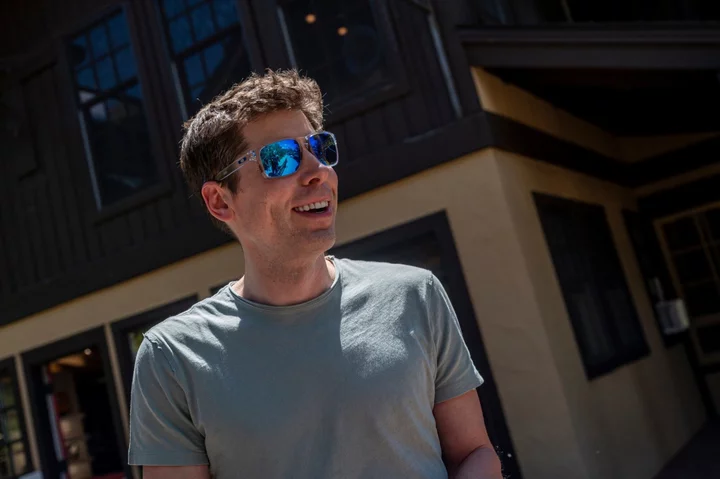
Sam Altman’s Ousting and Possible Return to OpenAI: What We Know
OpenAI stunned employees, investors and much of Silicon Valley on Friday by ousting Chief Executive Officer Sam Altman,
2023-11-19 10:16

OpenAI Board Being Pressed by Some Investors to Reinstate Altman
OpenAI investors are pressing the company’s board to reverse its decision to fire Sam Altman as chief executive
2023-11-19 08:46

Police to trial use of drones as first responders to emergencies
Cutting-edge plans to use drones as first responders to police emergencies will be trialled in Norfolk next year. If testing is successful, the devices would be stationed on buildings and operated remotely to be sent first to scenes to give police early information. Initial trials, under a scheme dubbed Project Eagle X, will take place in Norfolk, which has limited access to the helicopters flown by the National Police Air Service because they are stationed so far away. Further tests will also take place in Thames Valley Police and Hampshire. It can tell you straight away whether you're talking about a major road traffic collision that requires three fire engines and four ambulances, or whether it's a minor prang and someone's getting overexcited Neil Sexton, National Police Chiefs' Council Police in England and Wales are working with officers in the US as similar trials have taken place in San Diego. The drones as first responders (DFR) devices are also set to be trialled in Belgium and the Netherlands. Neil Sexton, who advises the National Police Chiefs’ Council on the use of drones, said: “DFR is a drone that sits autonomously on a roof somewhere in a city and it’s in a box, it’s protected. “From a control station that receives a 999 call it can be launched completely remotely, flying overhead an incident to gain situational awareness that will be fed back not just to that control station or control room, but also to the first responders who are about to arrive on the ground.” The hope is the drone would give more accurate information on the potential scale of an incident that a potentially shocked member of the public who has called 999, and get there more quickly than a helicopter. “The ability to get a remote aircraft overhead an incident that is still developing to gain a better situational awareness [is] much improved over phone calls from members of the public who are under stress,” Mr Sexton said. “Sitting overhead, it can tell you straight away whether you’re talking about a major road traffic collision that requires three fire engines and four ambulances, or whether it’s a minor prang and someone’s getting overexcited.” Currently, police forces in England and Wales use about 400 drones that cannot be flown out of the operator’s line of sight. Plans are in place to amend those rules to allow police operators to do so, with initial trials taking place in areas with closed-off airspace next year. Forces are also planning much wider use of retrospective facial recognition technology, with chiefs proposing to double its use by May. The biometric software, hailed as significant a step forward for policing as DNA analysis, is used to compare images from sources such as CCTV with forces’ databases of custody shots. Britain’s largest police force the Metropolitan Police has already said it will use the software to catch prolific shoplifters caught on CCTV. South Wales Police, one of the forces to spearhead use of live and retrospective facial recognition, is also piloting software that can be used by officers on their mobile phones. Around 50 officers currently have access to an app on their phones that allows them to take a photo of a suspect and compare it to the force’s mugshot database. If the test is successful, the system could be rolled out across England and Wales. Read More Apple to adopt system to improve texting between iPhones and Android devices ICO seeks permission to appeal against Clearview AI tribunal ruling Users of iPhones can now check bank balance from Wallet app VR tool aims to help rail passengers spot and safely tackle sexual harassment Ring to preview security features with abuse charity to boost safety TikTok launches feature to save songs to music apps like Spotify
2023-11-19 08:20
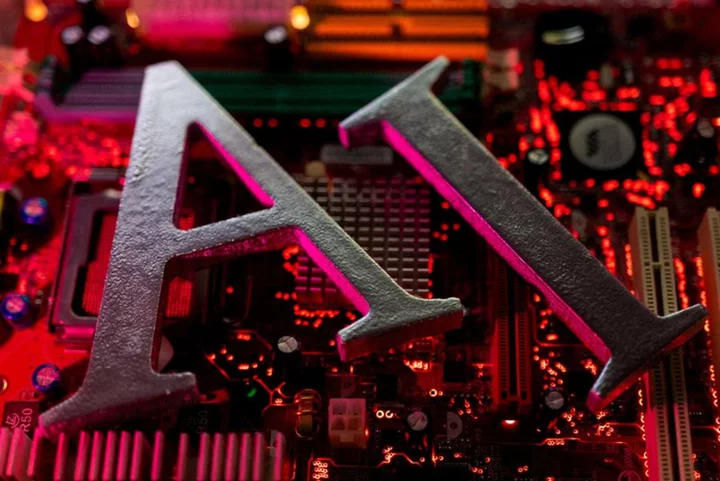
Exclusive-Germany, France and Italy reach agreement on future AI regulation
By Andreas Rinke BERLIN An agreement on how artificial intelligence should be regulated in the future has been
2023-11-19 04:18
